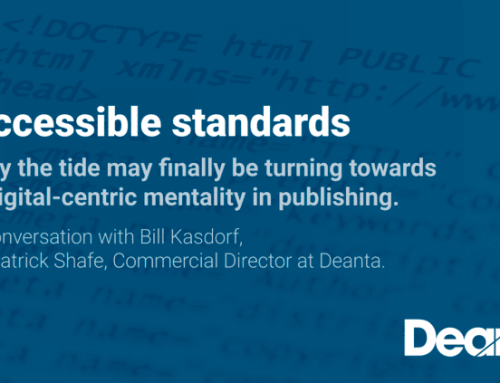Thanks to the digital transformation of the publishing industry, publishers have access to a multitude of data from a variety of sources. When this data is processed and analysed, publishers can gain a better understanding of their readers’ habits, tastes, and preferences, and gain visibility over broader trends that could inform how their books are marketed.
And a publisher’s most critical source of data is metadata. In modern publishing, ISBNs and store layout take a back seat to book metadata.
The joys of online discovery through metadata
While most people still rely on the recommendations of friends to discover new books and authors, the process of finding such books largely rests on a process of online discovery.
Search engines and e-commerce platforms make it easier than ever to find information about a book or author. With sound metadata in place, a reader could find a book based purely on a snippet of information: part of the title, the names of the main characters, or a cover image.
What is far harder to accomplish is finding a book that is similar to another one you enjoy. For example, if you enjoy an author that writes a specific style of comic fantasy, finding other similar authors is not as simple as searching for “comic fantasy” via a search engine. (Ironically, this is far easier in the traditional book store environment where authors with similar styles are often grouped together).
Best practice would be: senior person who’s invested in the titles, who knows the list, keeping up with it ideally on a weekly basis as things are changing.
Lara Silva McDonnell, Senior Project Manager, Deanta
The best – we’d argue the only – way to increase the chances of serendipitous online discovery of a publisher’s authors or titles is through metadata. There’s an old industry estimate that 7/10 books never earn back their advances; in fact, some experts estimate that 99% of all books published never make back the cost of production, marketing, and distribution. How many of these books are currently simply gathering digital dust in some undiscoverable recess of the online marketplace? And as new titles flood the literary scene, what chances exist of those books ever being found by the types of readers that would enjoy them most?
It’s a no brainer, it’s proven and it’s consistent. It’s just a matter of keeping up on your data as your titles are changing.
Lara Silva McDonnell, Senior Project Manager, Deanta
Rich metadata is the best marketing investment you can make in the digital age
Metadata may not look as pretty as a billboard advertisement or have the same shine as a glossy magazine advert, but it’s arguably far more likely to increase the sales of a book.
This isn’t a new concept. Organisations like BISG in New York and BIC and EDitEUR in London have been emphasizing the vital importance of rich book metadata for many years. Nielsen and Bowker have carried out research on the link between richer metadata and better sales. Yet the publishing industry has been slow to adapt: many publishers still use Excel, manual entry into web forms, or ONIX 2.1, a 2003-era standard, for communicating metadata. Many deliver the same basic range of metadata they used a decade ago, and ignore newly important fields like keywords, tables of contents or Thema subject codes. Richer data is the key
While traditional book marketing metrics focus on reach (number of eyeballs) and share of voice (how many eyeballs you reached compared to other similar books or publishers), metadata links directly to sales. An investment in sound metadata not only yields better reach and exposure online, it quite literally drives sales of that book.
If you’re interested in other ways on how to drive awareness and sales of your next publication, have a read of What traditional publishers can learn from the rabble-rousers like Amazon?
Nielsen confirms that metadata drives sales
When Nielsen produced a white paper illustrating the link between metadata and sales in 2012, the findings were clear: books with complete metadata and an accompanying image vastly outperformed those with incomplete metadata.
In 2016, Nielsen released an update to the white paper following two parallel studies in the UK and US. The findings were startling: titles in the US with the full complement of basic data element, as well as a cover image, experienced sales that were 75% higher per ISBN than titles without complete data. Titles in the UK that met the BIC Basic requirements, which indicate the bare minimum of submitted metadata for a title, and had a cover image had average sales more than twice as high as those who do not meet the standard.
There is an exponential opportunity for even smaller publishers to expand their sales through better metadata.
Darren Ryan, CEO, Deanta
A transformation, not a trend
Metadata is not simply a trend or technology that publishers should take notice of. It is a cornerstone of effective book marketing in the digital age, and an invaluable source of data that could mean the difference between best-seller and dust-collector. Born of the digital transformation of the publishing industry, metadata fundamentally changes the way books are classified, sold, found and marketed.
As one industry expert notes, “the smartest organizations are not those with the smartest people but those with the quickest access to their collective knowledge.” Metadata is that tool: it helps publishers increase the relevance and discoverability of their books, helping them build stronger, more direct relationships with their readers by generating accurate data that can be analysed for insights, trends and opportunities.
So, what are publishers to do?
Working with an experienced outsourced publishing and project management partner can greatly ease the process of building a metadata publishing strategy. Get in touch with us to find out more about our trusted global services.
In the meantime, have a look at our white paper, Managing your Metadata, to learn more on how metadata can increase book discoverability and boost sales.












